MURFREESBORO, Tenn. — Cope Administration Building on the campus of Middle Tennessee State University is a little greener these days, thanks to nearly a dozen plants that now call the place home.
Math professor James Hart was in a pickle when he learned his beloved plants would need to be relocated due to major renovations at Kirksey Old Main, or KOM, where his office was housed.

“I wasn’t exactly sure what I was going to do with them because I already have 200 plants at home,” said Hart grinning, “and we just didn’t have room.”

KOM is one of the five original buildings on campus and was vacated in the spring, along with neighboring Rutledge Hall, as part of the two-year, $54.3 million renovation project to upgrade the aging facilities.
Hart said MTSU Provost Mark Byrnes and his assistant, Allison McGoffin, “very graciously” opened the doors of Cope to his plants.
“We are delighted to have Dr. Hart’s plants in Cope for the next couple of years,” McGoffin said. “The plants have generated much curiosity and conversation. We invite the campus to see them in person.”
Visitors may view Hart’s plants inside of Cope Administration Building, which can be accessed via MTSU’s main entrance at 1301 E. Main St. Hours are 8 a.m. to 4:30 p.m. Monday through Friday.
Greenhouse vibes in Cope
With the floor-to-ceiling windows of the two-story atrium-style lobby, Cope provided the perfect conditions for the oversized plants that Hart inherited from his mother.
“My mother got to where she could no longer handle these plants,” he said, “so these plants have resided in Kirksey Old Main since 2010. But they’re refugees now, just like the rest of us.”
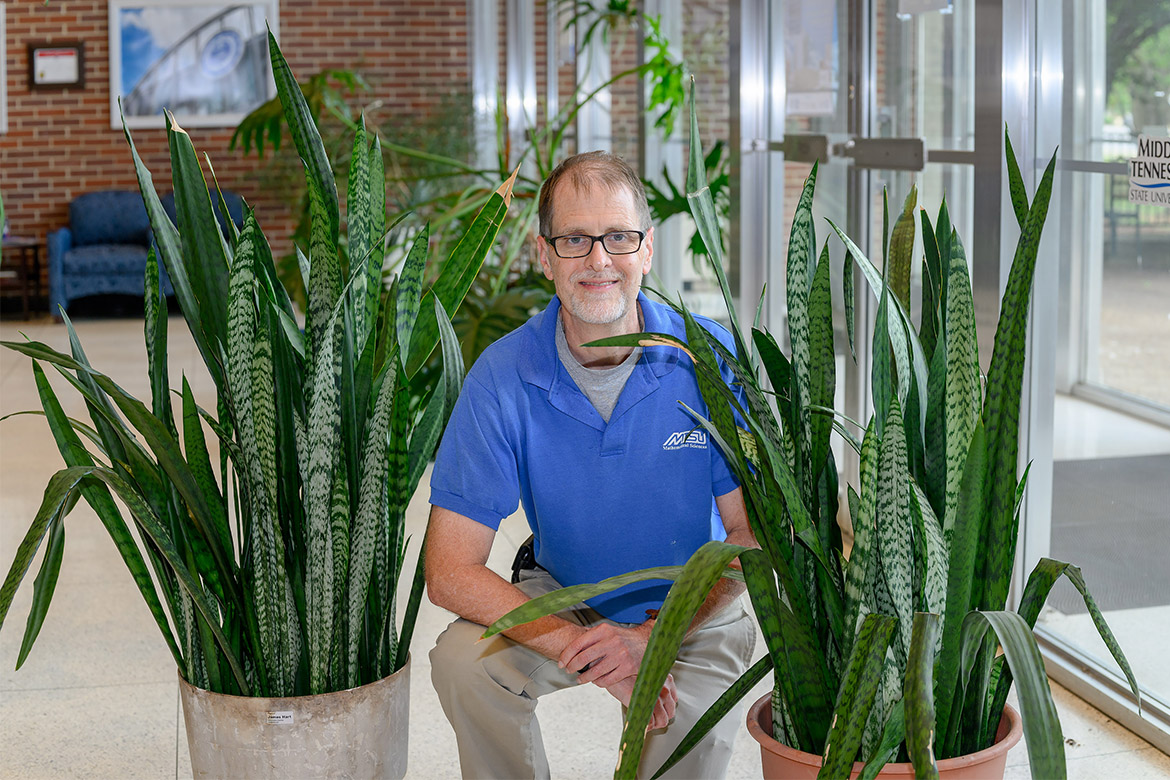
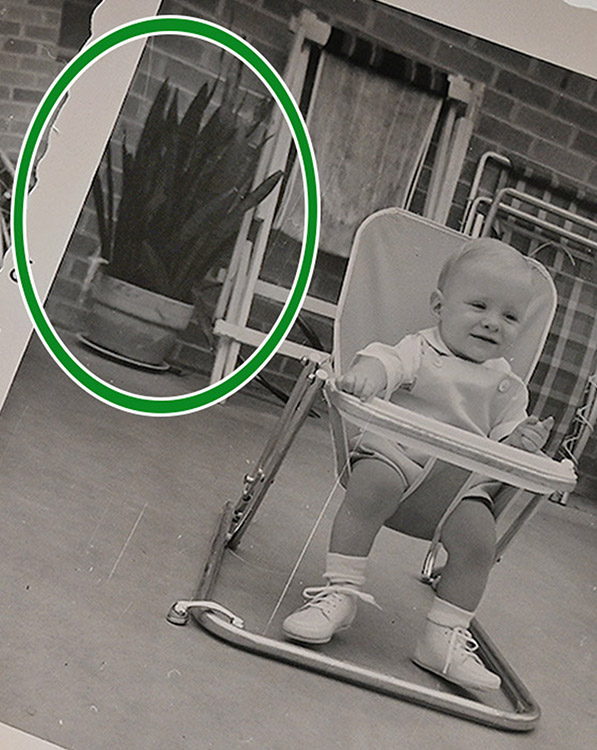
Most of the plants predate his 33-year tenure at MTSU.
“I’m not sure exactly how old some of them are,” Hart said. “But these mother-in-law tongues are the descendants of the oldest that we think date back to World War II.
“I know it’s at least 60 years old because I have pictures of me as a child with it,” said Hart, referencing a black-and-white photo of himself in a baby walker with the mother-in-law tongue in the background.
Also known as a sansevieria, the plant has been subdivided countless times and likely came from a neighbor from his hometown of Little Rock, Arkansas.
“She could make anything grow,” Hart joked.
Like his neighbor — and many of his own family members — Hart also has a green thumb.
“I think it’s genetic,” Hart said. “Even when I was a little kid, I would go into other people’s yards and dig things up. I’d get in trouble all the time.”
His love of plants grew as fast as he did.
Planting memories
The Cope collection includes the very first plant Hart could call his own — a ti plant (cordyline fruticosa) that is often used in making Hawaiian hula skirts.
“I was about 7 or 8 and there was an old store called Weingarten’s that was having a sale on ti plant logs. I begged my mother to buy me one and she finally relented. And this is that plant,” Hart recalled, fluffing its leaves. “And it’s kind of special to me because it’s the very first plant that I had that was just mine.”
There’s also a peace lily in his collection, also called a spathiphyllum, that dates back to the funeral of his beloved grandmother, Vesta Jewel Cates, who passed in the late 1970’s.
Another specimen with a special story tied to it is a pencil plant (euphorbia tirucalli) that was propagated from an “unauthorized” cutting of the original, which was a towering specimen housed in the music building of his alma mater at Hendrix College in Conway, Arkansas.
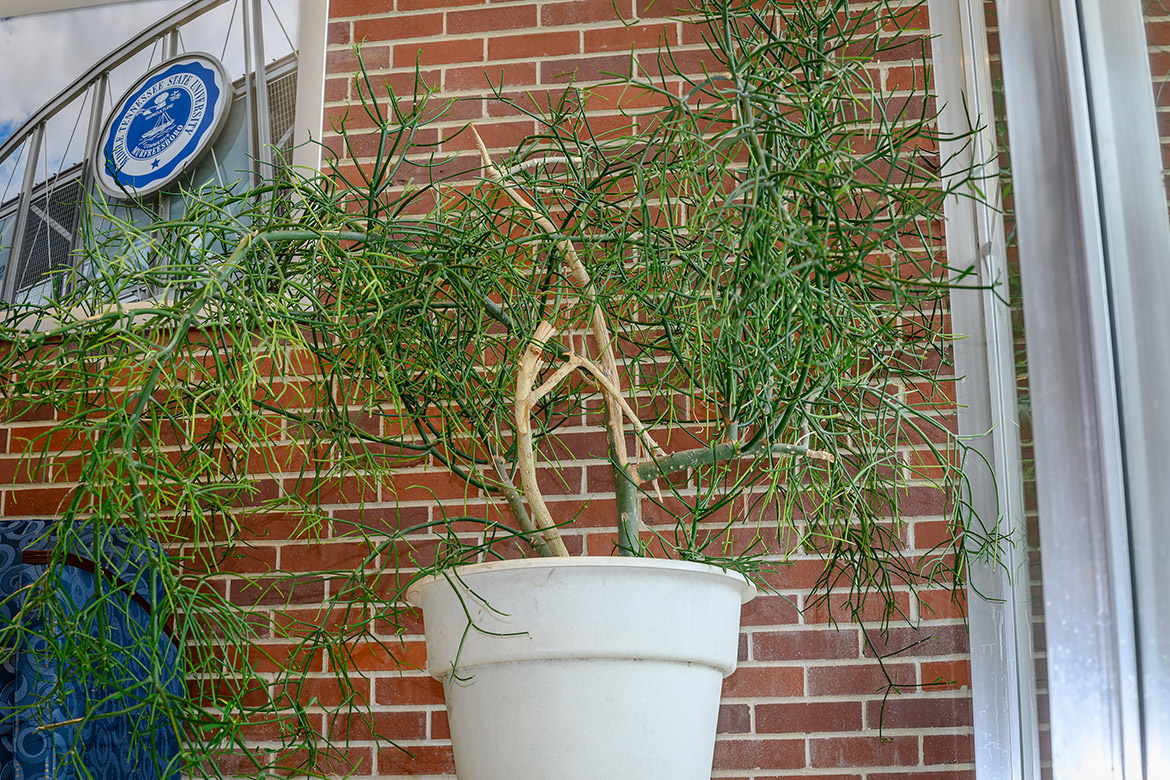
“The original cutting is at my house and it’s about 10 feet tall,” he said. The “baby” in Cope is about five feet tall.
He doesn’t recommend taking cuttings on your own. The sap is toxic.
Walk down the garden path
At the front entryway of Cope is a 5-foot tree philodendron (thaumatophyllum bipinnatifidum) with a spread of about 8 feet. It can wrap its snakelike roots around trunks of trees in the “wild” and “strangle” them. With nowhere to go, Hart redirects the roots back into the soil of the pot.
“Otherwise they’ll just crawl across the floor looking for people moving too slow,” Hart joked.
According to his mother, the plant likely dates back to the 1950s and was passed down to his mother from his grandmother in the 1970s when she died.
Topping out at 7 feet, the tallest plant in Hart’s collection is a ponytail palm (beaucarnea recurvata), also called an elephant’s foot due to the hefty trunk base.
“I found this one in the trash at the apartment where I lived when I came to teach at MTSU,” recalled Hart, who brought the discarded plant back to life and it still stands 32 years later.
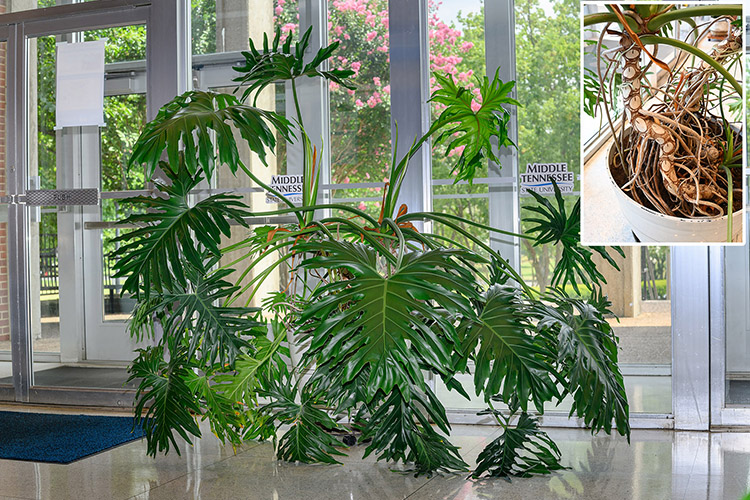
When his mother could no longer move the pots on her own, her plants were hauled to Murfreesboro in the back of a pickup truck, and Hart took over their care. “At least the truck bed was covered,” Hart said, adding “my plants have to be survivors.”
Anticipating his mother’s eventual move from the land owned by the family for more than a century, Hart has been careful to preserve as many specimens as possible from his childhood home.
“Over the decades, I have propagated most of the shrubs my grandparents planted,” Hart said.
The public is encouraged to stop by to view the plants, just keep moving so the philodendron roots don’t catch you.
— Nancy DeGennaro (Nancy.DeGennaro@mtsu.edu

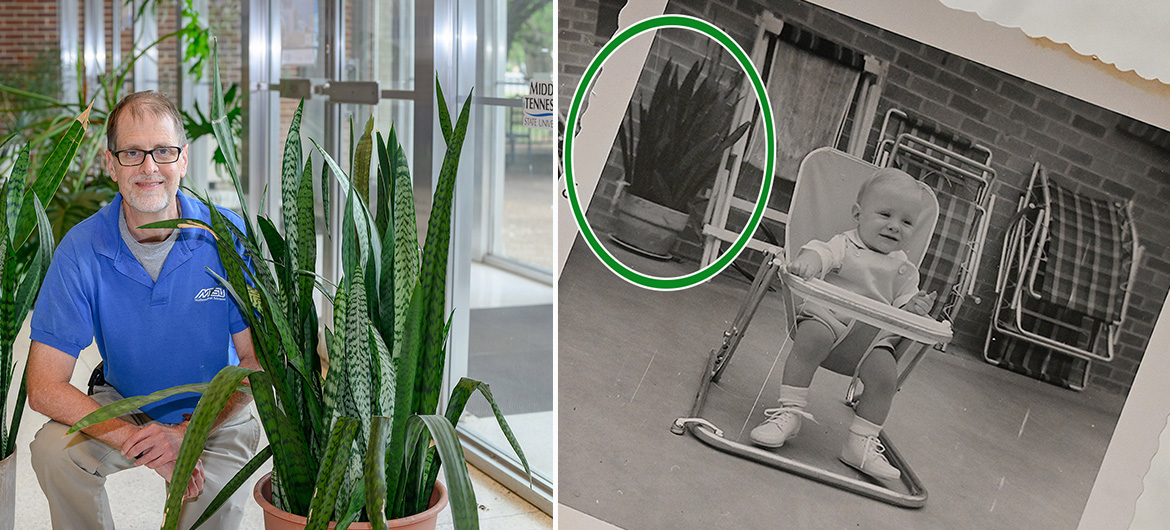
COMMENTS ARE OFF THIS POST